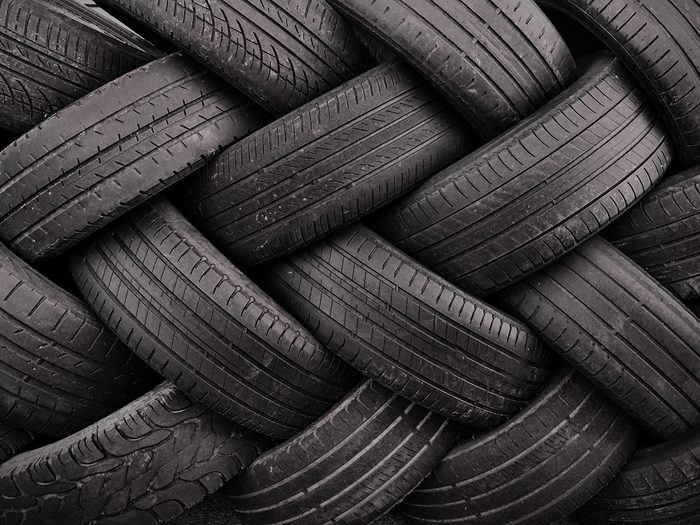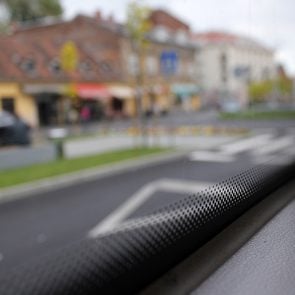Why Are Tires Black?

The answer might surprise you: It's due to a key ingredient that greatly improves tire efficiency and overall strength.
Tires and wheels are like fashion accessories on a vehicle. In fact, according to the Online Etymology Dictionary, “tire” is a shortened form of “attire,” as in the dressing of a wheel.
As times, trends and tastes change, so has the look of tires and wheels. Tires in the 19th century were solid rubber; now they’re air-filled radials. One hundred years ago, tires were all white. Today, most tires you see on the road are all black.
Curious why tires are black? Here’s what you need to know.
Are Tires Naturally Black?
No.
Natural rubber, one of the main ingredients in tires, is a white, milky latex. The first mass-produced inflatable auto, bicycle and motorcycle tires produced were white, but failed to last.
Today, up to 200 ingredients go into manufacturing the modern tire. Refined carbon black, a byproduct of incomplete combustion of coal and oil, is a key one.
Why Are Tires Black?
Tire manufacturers discovered that adding carbon black, polyester, metal and other synthetic rubber compounds to natural latex helps tires perform better and last longer. Without carbon black, tires wouldn’t last 8,000 kilometres, according to Jack L. Koenig in his book, Spectroscopy of Polymers. It also makes tires black.
Besides significantly increasing tire mileage and durability, carbon black:
- Protects tires from dry rot.
- Improves handling, stability, braking and fuel economy.
- Rapidly transfers heat away from a tire’s core and treads, increasing lifespan.
- Disburses static electricity. In today’s vehicles crammed with highly sensitive electronics, static electricity can quickly damage expensive electronic devices.
- Makes tires easier to keep clean and shiny.
Why Aren’t Tires Available in Colours Besides Black?
They used to be. But people wouldn’t buy them.
Orange, blue, yellow and green tires functioned the same as their black counterparts and passed all North American standards for road safety and performance. But they never became popular.
BFGoodrich once sold tires with colourful treads. According to Michelin, BFGoodrich’s parent company, in the 1950s Goodyear manufactured different colour tires to match your car. That way, drivers could change tires to match their fancy evening attire.
Goodyear also made tires from a translucent material with lights inside! But none were a hit. Just like white tires, colourful tires got dirty fast. They were also expensive. Without carbon black, people weren’t eager to spend extra money on something that wouldn’t last long.
Today, white tires for antique vehicles are readily available. So are wide whitewall tires, made from the original molds to ensure authenticity when restoring classic and collector vehicles.
Tires with raised white letters, narrow whitewalls and thin red-striped sidewalls can be found for custom applications. Pirelli produces tires for ultra-high-end vehicles with different coloured sidewalls, lettering and stripes, using similar compounds and production processes as their F1 racing car tires.
Next, find out what happens if you don’t switch out your winter tires in the spring.






